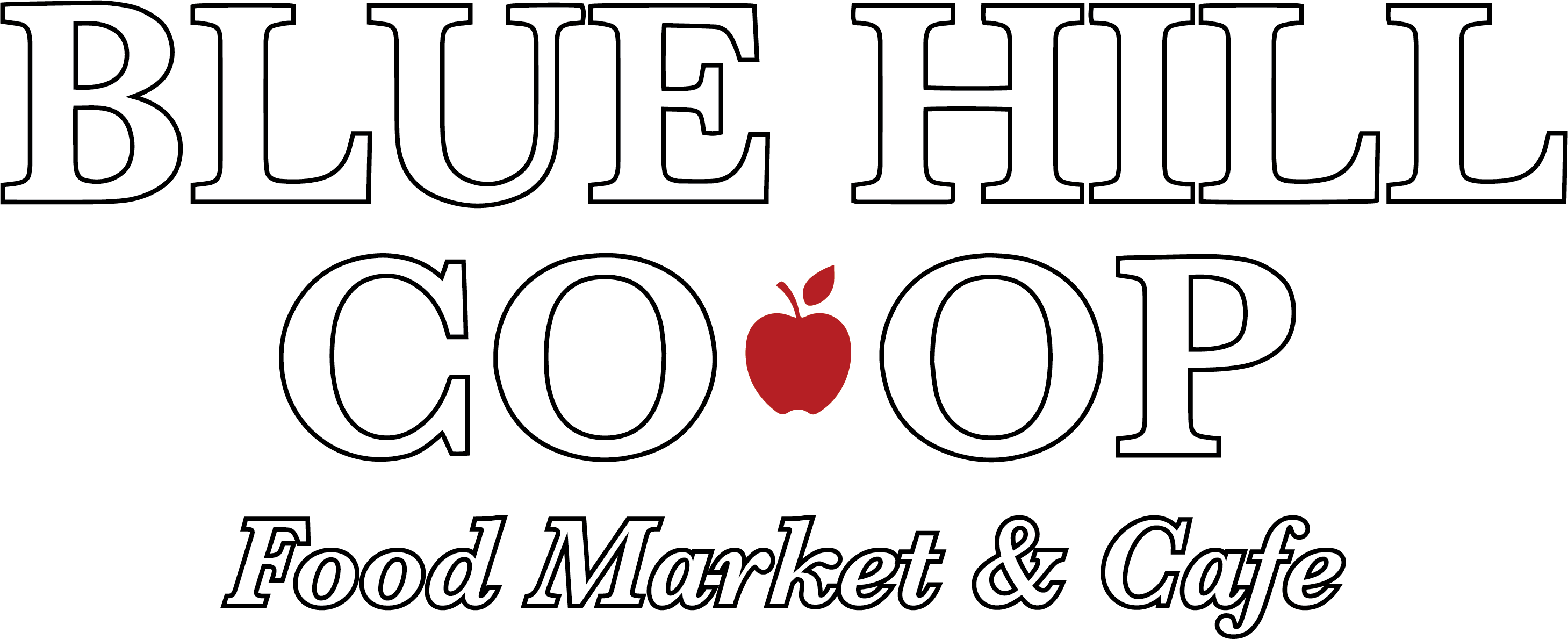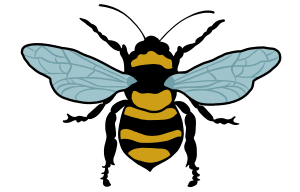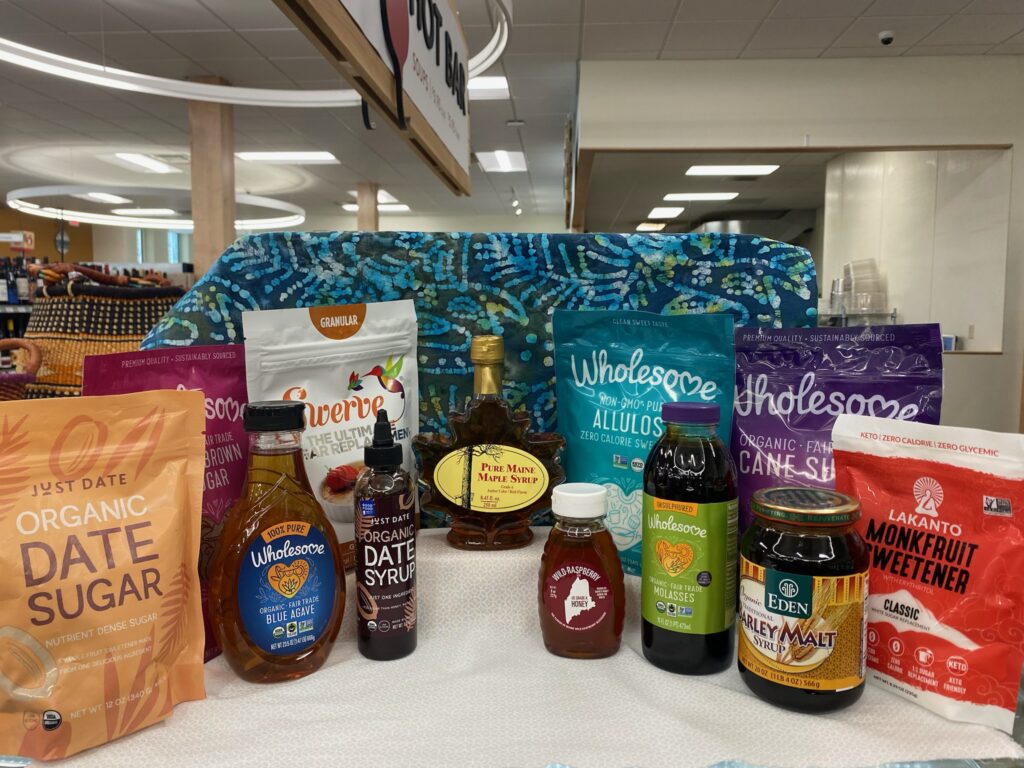We all love sugar; it’s a biological fact. There are a lot of choices out there for ways to bring a little more sweetness into our lives. So many options that it can be a bit confusing. Learn more about their pros and cons to make the best choice for you.
First, a little science
THE “OSES”
Glucose: The most abundant simple sugar. It is the body’s favorite form of energy. Glucose is absorbed directly into the bloodstream.
Fructose: This sugar is found in fruits, agave, honey, and most root vegetables. It is the sweetest sugar. It can only be broken down in the liver and has less impact on your blood sugar than glucose (it still affects it, though).
Sucrose: A disaccharide (linked sugar) comprising 50% glucose and 50% fructose. Sucrose is what you might call “standard sugar.”
Maltose: A disaccharide (linked sugar) made from two linked glucose cells. It is produced by starch.
OTHER SUGARS
Mogroside: A glycoside (a type of sugar molecule) that is found in certain plants. The body doesn’t react to mogroside the same way it does to other sugar molecules. Traditionally it is used in Chinese medicine.
Sugar Alcohols: Organic compounds derived from sugars. They’re absorbed at 50% of the rate of sugars, making them safer for people with blood sugar troubles.
White Sugar
Sucrose
White or table sugar is made from sugar beets or sugar cane. It’s highly refined, and during processing, non-organic sugar cane sugar uses bone char in the process, and some consider it non-vegan. Organic sugar and sugar beet sugar does not use bone char during processing.
Pros
It’s inexpensive, easy to cook with, and effortless to find.
Cons
It’s sucrose, a mixture of fructose and glucose. It is highly processed and refined, stripping it of any nutrients. Eating too much sugar can lead to weight gain, blood sugar problems, and an increased risk of heart disease. It also causes tooth decay. Another con for some would be that non-organic cane sugar is not considered vegan by all.
Brown Sugar
Sucrose
Brown sugar is, like white, made from sugar beets or sugar cane. Traditionally it was a less refined sugar, leaving some molasses in it. However, today, most brown sugar is refined white sugar that has molasses added back in. Using this method gives a more consistent product.
Pros
It has a pleasant, caramelly flavor. Molasses is added back into the sugar after processing, giving it trace amounts of nutrients. It’s also inexpensive.
Cons
It’s still sucrose and has risks similar to table sugar. The added molasses does not provide significant nutrients to offset this. Like white sugar, non-organic brown sugar may not be considered vegan.
Raw Sugar
Sucrose
The name “raw” is slightly misleading, making it sound unrefined. However, raw sugar is still refined and processed. The term simple means that the sugar is only crystallized once. Types of raw sugar include turbinado, demerara, and evaporated cane juice.
Pros
It’s easy to cook with and easy to find. A bit less refined and processed than table sugar, and it retains more molasses and water, which dilutes the overall amount of sugar you’re consuming.
Cons
It’s still sucrose and has risks similar to table sugar.
Molasses
Mostly Sucrose
Molasses is a viscous substance produced during the refining process of white sugar (sugar beet or sugar cane). It has a warm, sweet, somewhat smoky flavor.
Pros
It contains minerals such as vitamin b6, calcium, potassium, copper, iron, magnesium, manganese, and selenium. It has a distinct flavor essential for gingerbread and Christmas cookies. If you’re going to eat sugar, molasses is a bit healthier.
Cons
It’s still sugar and should not be eaten in an attempt to obtain these minerals, which are better obtained from whole foods.
Coconut Sugar
Mostly Sucrose
Coconut sugar is made from the sap of the coconut palm tree. It’s slightly less refined than cane and sugar beet sugar.
Pros
It is far less refined than cane sugar. It also contains trace amounts of iron, zinc, calcium, magnesium, and potassium. It contains inulin (a prebiotic fiber) and antioxidants. It is lower on the glycemic index than table sugar. It’s also paleo-friendly.
Cons
It is still a high-calorie sweetener high in fructose. It is easier and healthier to get the nutrients in coconut sugar from whole foods like fruits and veggies.
Maple Syrup
Sucrose
Maple syrup is made from the sap of sugar maple trees. It was traditionally used by indigenous Americans long before Europeans. It is paleo-friendly.
Pros
It has a great flavor and is pretty easy to replace sugar with. Maple syrup contains calcium, potassium, iron, zinc, and manganese. It also contains antioxidants.
Cons
Maple syrup is high in sucrose and has risks similar to table sugar. It is easier and healthier to get the nutrients in maple syrup from whole foods like fruits and veggies.
Brown Rice Syrup
Glucose
Brown rice syrup is also called rice malt syrup, rice syrup, or maltose syrup. It’s made from, you guessed it, brown rice. It has a mild sweetness and a light nutty flavor. Some say it tastes like butterscotch.
Pros
It is entirely glucose, with no fructose. This fact means that it has less effect on your liver. It works well as a vegan alternative to honey.
Cons
It is higher on the glycemic index than other sugars. This fact means it is particularly bad for people with diabetes.
Honey
Fructose and Glucose
Honey is probably the healthiest option for sugar sweeteners. It’s been used in natural medicine for centuries.
Pros
Honey is sweeter than sugar, meaning you can use less of it. It contains trace amounts of local pollen, amino acids, antioxidants, enzymes, minerals, and vitamins. It is naturally anti-bacterial and anti-microbial and has been shown to suppress coughs and help heal wounds. It’s easier to digest than table sugar.
Cons
It has more calories than table sugar. Eating too much honey can have risks similar to table sugar. Honey should not be given to infants under 12 months as pollen spores can cause infant botulism, which is rare but life-threatening.
Date Sugar
Sucrose
Date sugar is simply ground-up dried dates. It has a vaguely caramel-like flavor and is about 20% less sweet than table sugar.
Pros
It contains fiber, vitamins, minerals, and antioxidants. It’s lower on the glycemic index than other sugars.
Cons
It still has calories and carbohydrates. It doesn’t dissolve in liquid or melt like sugar.
Agave Nectar
Fructose
Agave nectar is a sweetener made from the agave plant. The same dessert-dwelling plant tequila is made from. It’s a thin syrup with a mild, slightly floral flavor.
Pros
It has a sweet syrupy flavor. It is lower on the glycemic index than sugar, making it somewhat safer for people with diabetes. It’s less refined than other sugars.
Cons
It has just as many calories as other liquid sugars (like honey and maple syrup). As with other sweeteners, it should be eaten in moderation.
Monk Fruit Sweetener
Mogroside
Monk fruit sweetener is a natural sugar alternative made from the luohan guo fruit, cultivated in Asia for hundreds of years. Its sweetness comes from mogroside, so it doesn’t affect the body like other sugars.
Pros
Monk fruit is non-caloric, sugar-free, and doesn’t raise blood sugar. For most people, it tastes the same as sugar, though sweeter, with no aftertaste. Monk fruit may have antioxidant and anti-inflammatory properties. Studies in animals and test tubes suggest monk fruit may inhibit cancer cell growth. Though few studies have been conducted, monk fruit has been eaten for hundreds of years in Asia and is for Chinese medicine.
Cons
Some people, but not all, report an aftertaste. Because it is 200 times sweeter than sugar, many companies mix it with inulin or erythritol, so check the label if you’re avoiding those.
Erythritol
Sugar Alcohol
Erythritol is a naturally occurring sugar alcohol found in corn. Its glycemic index is 0, so it’s a safe sugar alternative for people with diabetes.
Pros
It has 6% of the calories of table sugar but retains 70% of the sweetness. There is no aftertaste. Unlike other sugar alcohols, it is mainly absorbed into the bloodstream, preventing it from causing digestive troubles. Unlike xylitol, it is not poisonous to dogs.
Cons
Eating huge quantities in one sitting can cause gas, stomach cramps, and diarrhea. However, most people will have no digestive distress.
Allulose
Monosaccharide
Allulose is a naturally occurring sugar found in figs, raisins, wheat, maple syrup, and molasses. However, the amount found in these foods is so small that it’s synthesized from fructose for commercial use. However, it doesn’t affect the body the same way as fructose. It doesn’t crystalize like monk fruit and erythritol so you can make caramel with it.
Pros
Allulose is zero-calorie and doesn’t affect blood sugar at all. It has no aftertaste. Allulose doesn’t cause tooth decay.
Cons
It’s pricier than other alternatives. Eating in large amounts can cause some digestive distress for some.
Stevia
Steviol Glycoside
Stevia is probably the best-known natural sugar alternative. It’s extracted from the leaves of the plant species Stevia rebaudiana.
Pros
It is sugar-free and non-caloric. It doesn’t raise blood sugar. Some research suggests it may have anti-inflammatory compounds. It is 30-150 times sweeter than table sugar, meaning you can use less. It dissolves in liquid and is easy to use in baking.
Cons
It has a mild aftertaste which takes getting used to. Some store-bought stevia brands contain other sweeteners like sugar alcohols, dextrose, or glucose, so the ingredients should be read if you are trying to avoid those sweeteners.




